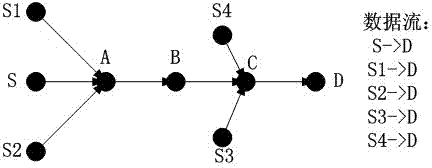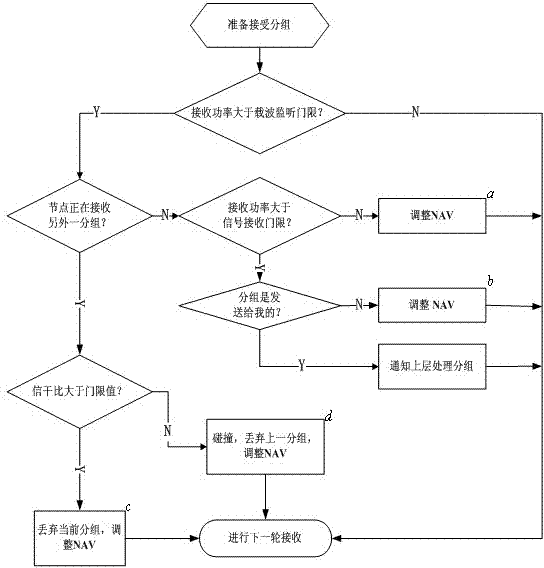Interference sensing cross-layer routing method based on node sending and receiving capacity
A technology of receiving capability and node, applied in the field of communication, can solve the problems such as the inability to receive and forward packets in time, the inability of nodes to send information, and the inability to effectively reflect
- Summary
- Abstract
- Description
- Claims
- Application Information
AI Technical Summary
Problems solved by technology
Method used
Image
Examples
Embodiment Construction
[0032] exist figure 1 Among the 9 nodes in the network shown, there are 5 data streams, namely S→D, S1→D, S2→D, S3→D, and S4→D. For the convenience of analysis, it is assumed that the route of transmission data flow S1→D, S2→D, S3→D, S4→D has been established, and now the route of transmission data flow S→D is to be established, and node B has sent a routing request packet RREQ( Route Request) to node C, now define the ability of node C to send packets belonging to data flow S→D and the ability to receive packets belonging to data stream S→D as follows.
[0033] CAP + SEND C S → D = P send _ state C S → D · P service C ...
PUM
 Login to View More
Login to View More Abstract
Description
Claims
Application Information
 Login to View More
Login to View More - R&D
- Intellectual Property
- Life Sciences
- Materials
- Tech Scout
- Unparalleled Data Quality
- Higher Quality Content
- 60% Fewer Hallucinations
Browse by: Latest US Patents, China's latest patents, Technical Efficacy Thesaurus, Application Domain, Technology Topic, Popular Technical Reports.
© 2025 PatSnap. All rights reserved.Legal|Privacy policy|Modern Slavery Act Transparency Statement|Sitemap|About US| Contact US: help@patsnap.com



